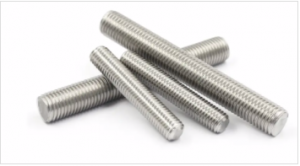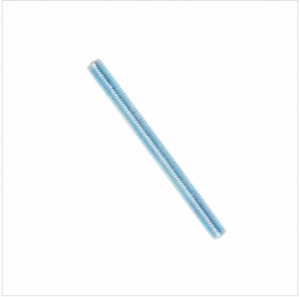As is well known, it is commonly used in plastic molding equipment, such as plastic profile extruders, injection molding machines, etc. The thread rod and barrel are the core components of plastic forming equipment. It is the part that is heated, extruded, and plasticized.
It is the core of plastic machinery. Screws are widely used in machining centers, CNC machines, CNC lathes, injection molding machines, wire cutting, grinding machines, milling machines, slow wire, fast wire, PCB drilling machines, precision engraving machines, engraving and milling machines, spark discharge motors, tooth biting machines, planers, large vertical gantry milling machines, and so on.
The main causes of wear and tear are as follows:
1.Each type of plastic has an ideal plasticizing processing temperature range, and the processing temperature of the material barrel should be controlled to approach this temperature range. Granular plastic enters the barrel from the hopper and first reaches the feeding section, where dry friction inevitably occurs. When these plastics are not heated enough and melt unevenly, it is easy to cause increased wear on the inner wall of the barrel and the surface of the screw. Similarly, in the compression and homogenization stages, if the melting state of the plastic is disordered and uneven, it will also cause faster wear.
2.The speed should be adjusted appropriately. Due to the addition of strengthening agents such as fiberglass, minerals, or other fillers to some plastics. These substances often have a much greater frictional force on metal materials than molten plastic. When injecting these plastics, if high rotational speeds are used, it will not only increase the shear force on the plastic, but also generate more torn fibers for reinforcement. The torn fibers contain sharp ends, greatly increasing the wear force. When inorganic minerals slide at high speeds on metal surfaces, their scraping effect is also significant. So the speed should not be adjusted too high.
3.The screw rotates inside the barrel, and the friction between the material and the two causes the working surface of the screw and barrel to gradually wear out: the diameter of the screw gradually decreases, and the diameter of the inner hole of the barrel gradually increases. In this way, the fit diameter gap between the screw and the barrel gradually increases as they gradually wear out. However, due to the unchanged resistance of the machine head and the splitter plate in front of the barrel, this increases the leakage flow rate of the extruded material when advancing, that is, the flow rate of the material from the diameter gap to the feeding direction increases. As a result, the production of plastic machinery has decreased. This phenomenon in turn increases the residence time of the material in the barrel, causing material decomposition. If it is polyvinyl chloride, the hydrogen chloride gas generated during decomposition enhances the corrosion of the screw and barrel.
4. If there are fillers such as calcium carbonate and glass fiber in the material, it can accelerate the wear of the screw and barrel.
5.Due to the uneven plasticization of the material or the mixing of metal foreign objects into the material, the torque of the screw suddenly increases, which exceeds the strength limit of the screw and causes the screw to break. This is a type of unconventional accident damage.
Post time: Jun-05-2023

